Book Launch of Mahabharata: Mewari Miniature Paintings (1680–1698) by Allah Baksh at India International Centre, Delhi
Discover the complete frontlist coverage of the book launch event of 'Mahabharata: Mewari Miniature Paintings' by Allah Baksh.on Sep 15, 2023
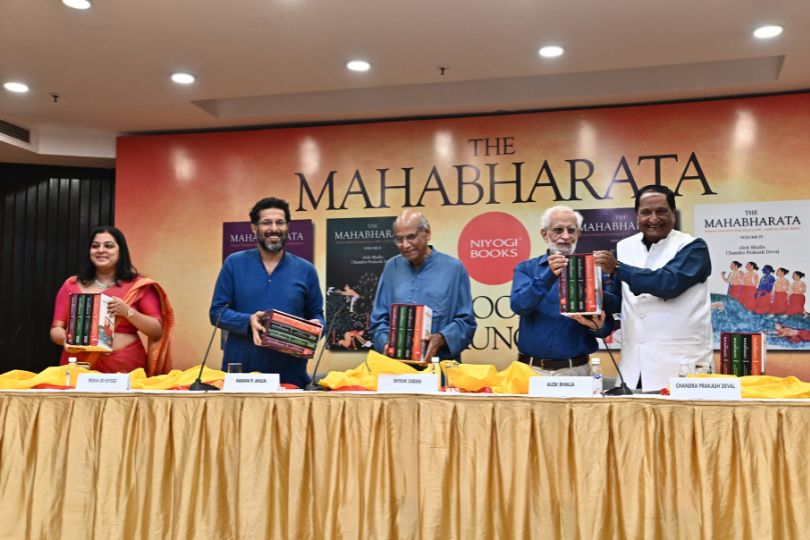
15 September 2023, New Delhi
The Mahabharata: Mewari Miniature Paintings (1680–1698) by Allah Baksh, meticulously put together by Alok Bhalla & Chandra Prakash Deval was released yesterday at Kamaladevi Complex, India International Centre, New Delhi.
The volumes were launched in the presence of Prof. Naman P. Ahuja, Academic, Art Historian & General Editor, Marg and Mr Shyam Saran, President, India International Centre along with the authors Alok Bhalla and Chandra Prakash Deval.
Speaking at the launch, Trisha De Niyogi said “The uniqueness of this work is that it presents the Mahabharata in paintings.”
Chandra Prakash Deval remarked, “The Mahabharata was translated from Sanskrit to Mewari in order to make it more accessible both to Maharana Jai Singh and his subjects. The translation to concise form in Mewari is truly commendable. This is a Rajasthan Mahabharata painted in the Mewari style; a true reflection of Mewari style. A culture that could produce the Mahabharata cannot be a backward culture. The epic also conveys the message of Ahimsa, of co-existence with nature and all its creations."
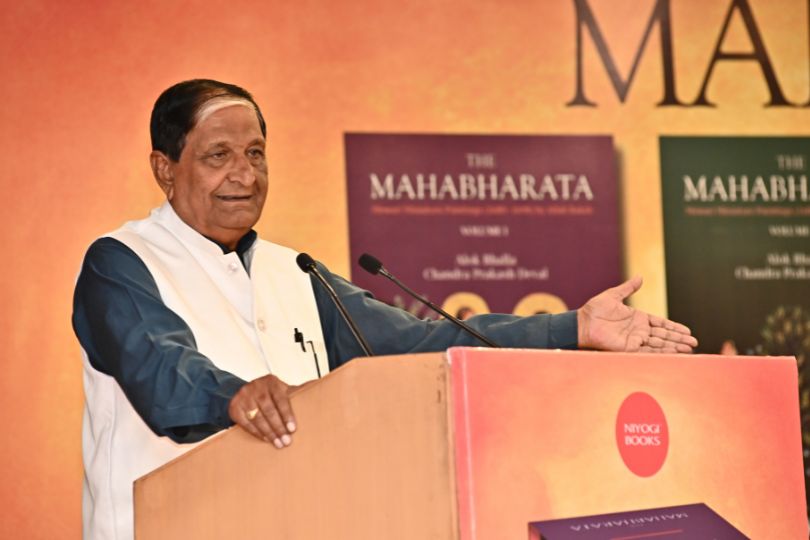
Alok Bhalla said, “These paintings deserve an honoured place in the history of Indian paintings. Quoting William Blake, he noted – The Worships of God is honoring his gifts in other men. Alok Bhalla pointed out the difference between “The Gita paintings that are vertical, reaching upwards, while the Mahabharata paintings are horizontal depicting the forward movement of human life. He ended by requesting the Government to preserve these paintings.
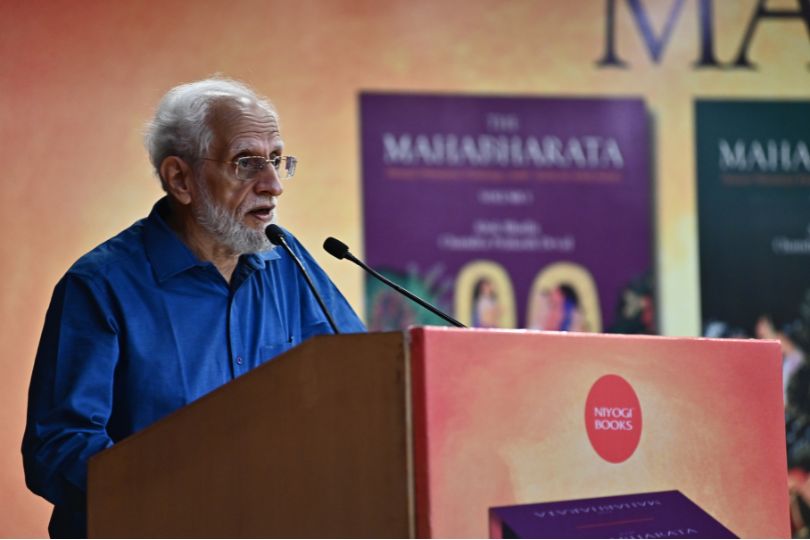
Naman Ahuja spoke about painters in Mewar such as Sahibdin who painted the Ramayana. Possibly Allah Baksh learned from such masters.
He noted that he is, “flabbergasted by the scale of the enterprise” in painting the entire Mahabharata and suggested that the Govt. of Rajasthan could build an online resource of all 4000 texts to enable scholars to study them. Prof. Ahuja also spoke about the specific style of Mewari painting and the training that Allah Baksh and his fellow painters must have received."
Shri Shyam Saran described the painter Allah Baksh, "as the gift of God due to his paintings' sensitivity and spiritual quality. He also spoke about the Indonesian Ramayana performance where Hanuman is the most important character and how a performer meditates to inhabit the spirit of the deity before performing. He ended by thanking Niyogi Books for their contribution to preserving Indian art and culture."
About the Volumes
Allah Baksh’s magnificent miniature paintings of Vyasa’s great epic, the Mahabharata, were commissioned by Udaipur’s Maharana Jai Singh, and painted between 1680 and 1698. The selection of nearly 2000 paintings, published in four volumes, are from a folio of more than 4000 extant works illuminating the Mahabharata. The fifth volume of 500 paintings devoted to the Gita, has already been published.
These radiant miniatures, which follow almost every story in every chapter of the Mahabharata, have no precedent in India’s art tradition. The emphasis in these paintings is not on heroic posturing and spiritual pride, but on the pain that the earth and its creatures endure when human beings tragically fail to fulfil their dharma. The images in the paintings are symbolically charged, their colours are clear and luminous, their lines are restrained and precise. Allah Baksh’s art of visionary thoughtfulness deserves an honoured place in the great library of Indian scriptures and their visual interpretations.
Introductions to the parvas illuminated in these four volumes offer reflections on the moral resonance of the stories, as they reveal the fate of a civilisation from its divine beginning to its fateful destruction. The Hindi translation of the Mewari text in the colophons, describing the story being illustrated, furthers our understanding of the history of cultural exchange between the different religions, regions and languages of India. Comments on the paintings in English enable the reader to decode the images and follow the narrative grandeur of this great Indian epic.
About the Authors
Alok Bhalla is a widely published critic, translator and poet. He has taught in various universities in the US and India, and has held Fellowships from different academic institutes in France, Italy, England, Germany, Canada and Israel. His books include Stories about the Partition of India (4 volumes), Partition Dialogues, Shades of the Preternatural (on Gothic fiction), The Politics of Atrocity and Lust (on the Vampire tale) and The Life and Times of Saadat Hasan Manto. He has also co-edited and translated Intizar Husain’s A Chronicle of the Peacocks, Day and Dastan and Story is a Vagabond. His verse translation of Dharamvir Bharati’s play, Andha Yug, is a recognised classic.
Chandra Prakash Deval was born in Udaipur. An eminent poet, fiction writer, translator, bibliophile, and cultural historian, he has published 14 collections of poetry in Hindi and Rajasthani. He has also translated the works of Ashok Vajpeyi, Ramakanth Rath and others into Rajasthani. He has been the recipient of many prestigious literary awards like the Sahitya Akademi Award in 1979 for his poetry collection, Paagi, and the Bihari Puruskar for Hirna! Maun Saadh Van Charana in 2013. The Government of India bestowed the Padma Shri on him in recognition of his contributions to literature in 2011. At present, he is actively involved in the development of Rajasthani language and literature.
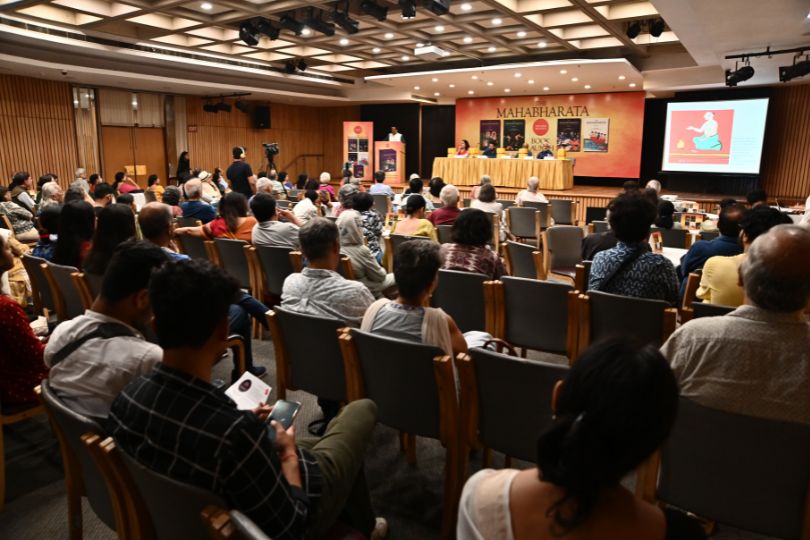


.jpg)







.jpg)


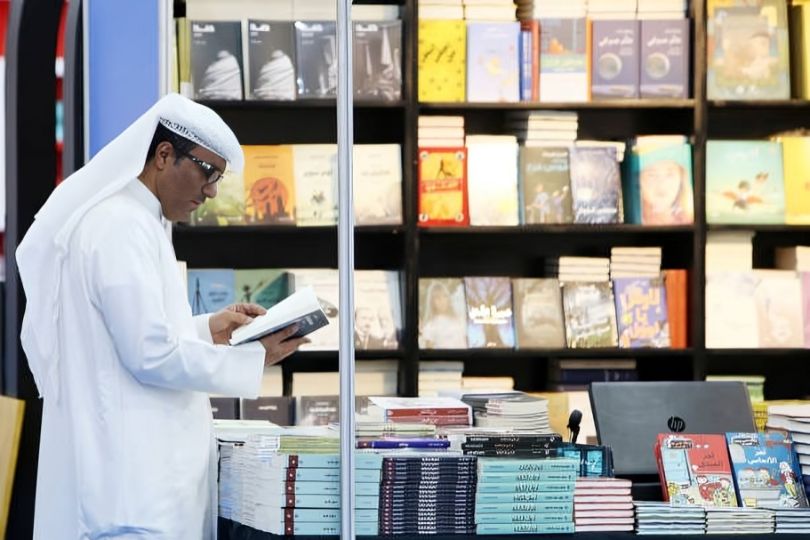
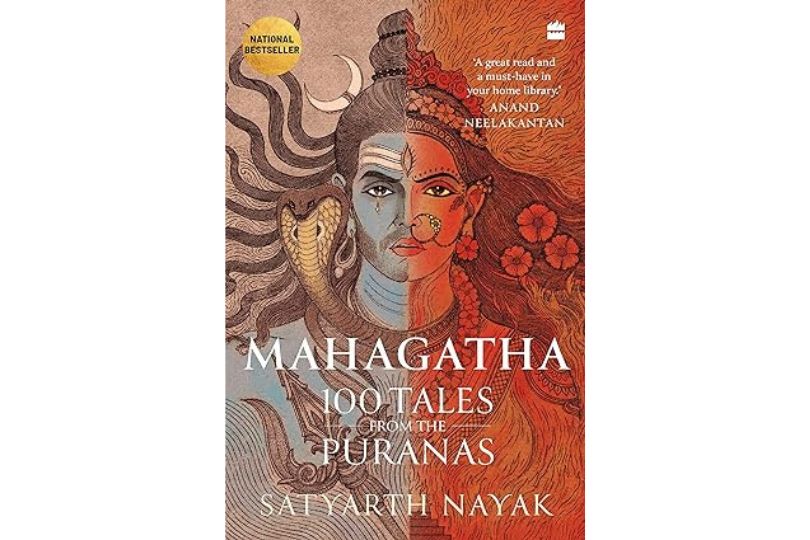

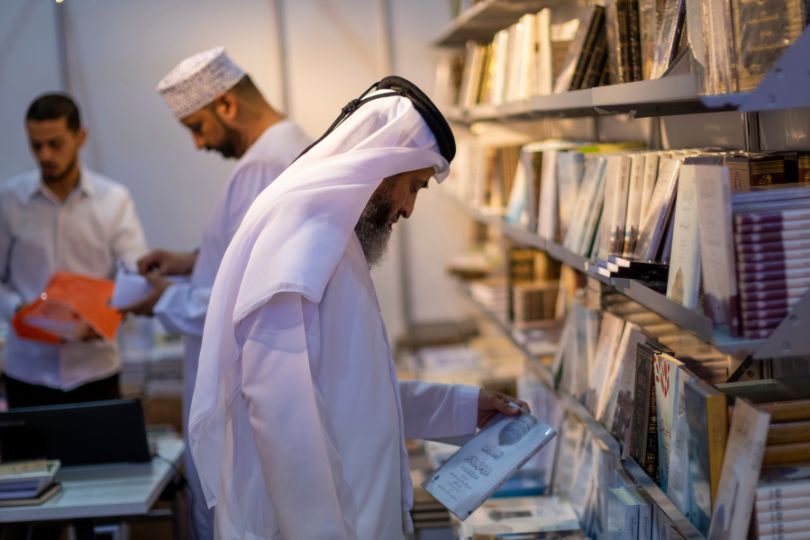


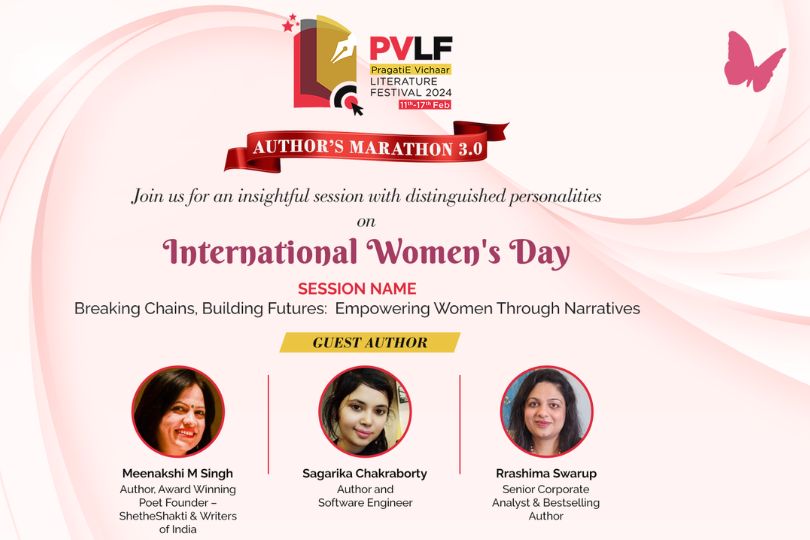
.jpg)
.jpg)



.jpg)
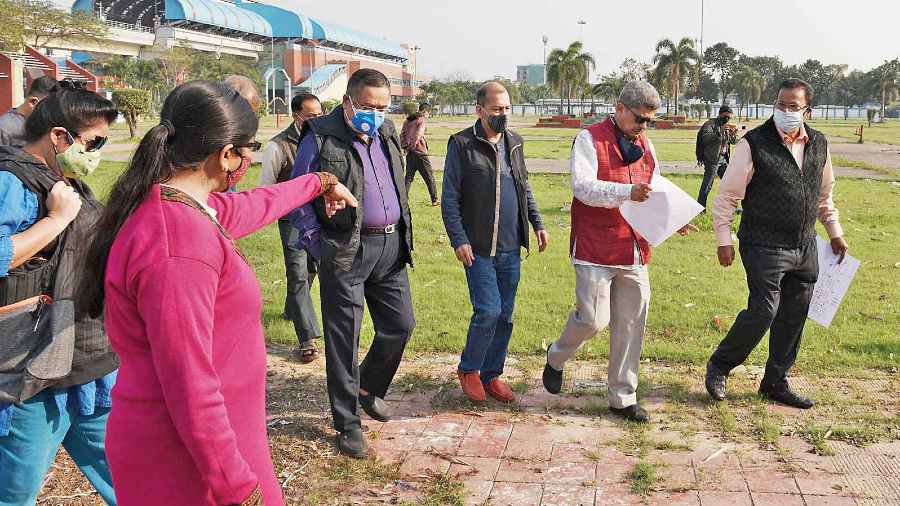
Sorry! No comment found for this post.